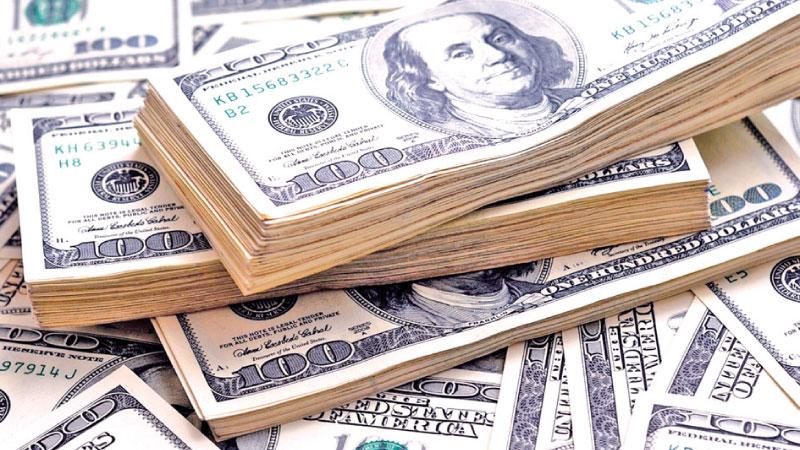
The phenomenon of an appreciation of the US Dollar has not been unique to Sri Lanka but has affected virtually every major currency in the world with the exception of the Japanese yen and arguably the undervalued Chinese renminbi, senior Central Bank officials said.
While the Sri Lankan rupee depreciated against the US Dollar by 4.3% during the year to August 3, the decline in currencies of some of the major regional economies against the greenback has been more intense than Sri Lanka, they point out.
“If you look at the movement in international currencies against the US Dollar so far during the year until August 3, you will see the Chinese Yuan depreciating by 5.2%, Philippine Peso by 6%, Indian Rupee by 6.6%, Korean Won 5.5%, Indonesian Rupiah by 6.6% and Australian dollar by 5.5 comparative to the Sri Lankan Rupee fall by 4.3%,” Acting Director at the Economic Research Department of the Central Bank, Dr. Chandranath Amarasekara said.
According to analysts, the U.S. dollar has strengthened, measured against a basket of major currencies amid tightening monetary policy in the U.S. and an intensifying trade dispute with China.
The rise of the US Dollar has been more marked in emerging markets, generally in double digits, as opposed to advanced countries where it has been around 5 percent, mainly due to interest rates nearing rock bottom in the United States.
“There has been a 40% decline in the value of Turkey’s currency against the dollar this year, which has raised concerns about a replay of the 1997-1998 emerging-market debt crises,” an analyst who spoke to The Sunday Observer yesterday noted.
On Friday, the Sri Lankan rupee hit an all-time low of 160.96 per dollar mainly owing to importer dollar demand and less dollar inflows. The rupee closed at 160.85/161.00 per dollar, compared with Thursday’s close of 160.73/83.
“The decline is largely driven by Foreign Institutional Investors (FIIs) outflow including in both advanced and emerging markets alike. Sri Lanka has experienced a US$ 229 mn in net outflow of foreign investment from the rupee denominated government securities market for the eight months up to 1st August 2018”, the analyst who did not wish to be quoted pointed out. Meanwhile, top rating agency, Moody’s Investors Service on Friday said Sri Lanka is one of the sovereigns that is most sensitive to rising global interest rates given forthcoming debt repayments that are more than its foreign exchange reserves.
Sri Lanka’s high external vulnerability is reflected in an External Vulnerability Indicator (EVI), the ratio of external debt payments due over the next year to foreign exchange reserves, of nearly 160%, it pointed out.
“Ghana and Sri Lanka have seen smaller declines in their currencies, of around 6% and 4% respectively,” Moody’s said in its report titled, “Sovereigns - Global Contagion risks greatest where external vulnerability, weak debt affordability meet low policy credibility”.
It noted that in Sri Lanka’s case, while foreign exchange reserves have increased over the past year, pressure on them will likely persist absent sustained capital inflows, as external debt repayment requirements increase materially in 2019-22.“The government’s gross borrowing requirement of about 18.5% of GDP and foreign currency composition of outstanding debt at about 46% also contribute to making Sri Lanka one of the sovereigns that are most sensitive to tightening external financing conditions,” Moody’s said noting that mitigating this exposure somewhat, the average maturity of government debt at 5.7 years implies moderate rollover risk.
“However, similar to Pakistan, we find that Sri Lanka’s debt affordability would weaken further should the cost of new debt rise and stay at higher levels,” the rating agency pointed out.
Addressing a press conference earlier this month, Central Bank Governor Dr. Indrajit Coomaraswamy cautioned that as global interest rates are easing up, there could be an incentive for foreign investors in government securities to move out if Sri Lanka allowed the differential between the island’s rates and the benchmark rates in the United States to reduce. Consequently, the Monetary Board decided to maintain policy interest rates at their current levels.
“There has been depreciation pressure in the Emerging Market space. Several countries have had their currencies depreciated more than the 4.3% depreciation recorded by the Sri Lankan Rupee. If we reduce interest rates that would trigger further pressure on the exchange rate at a time when number of Emerging Market currencies are experiencing a depreciation pressure,” the Governor noted.
While depreciation of the Rupee has several adverse consequences by creating inflationary pressures domestically and increasing the cost of dollar-denominated debt servicing, it however helps Sri Lanka’s exporters to remain competitive in tough global environment and the tourism industry with the destination becoming cheaper for foreigners, analysts pointed out.
